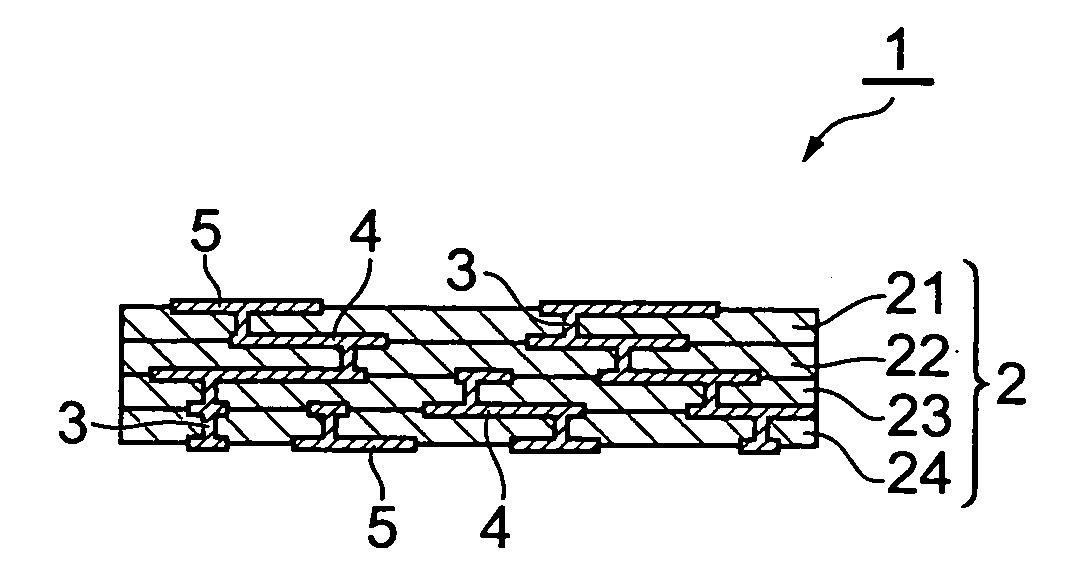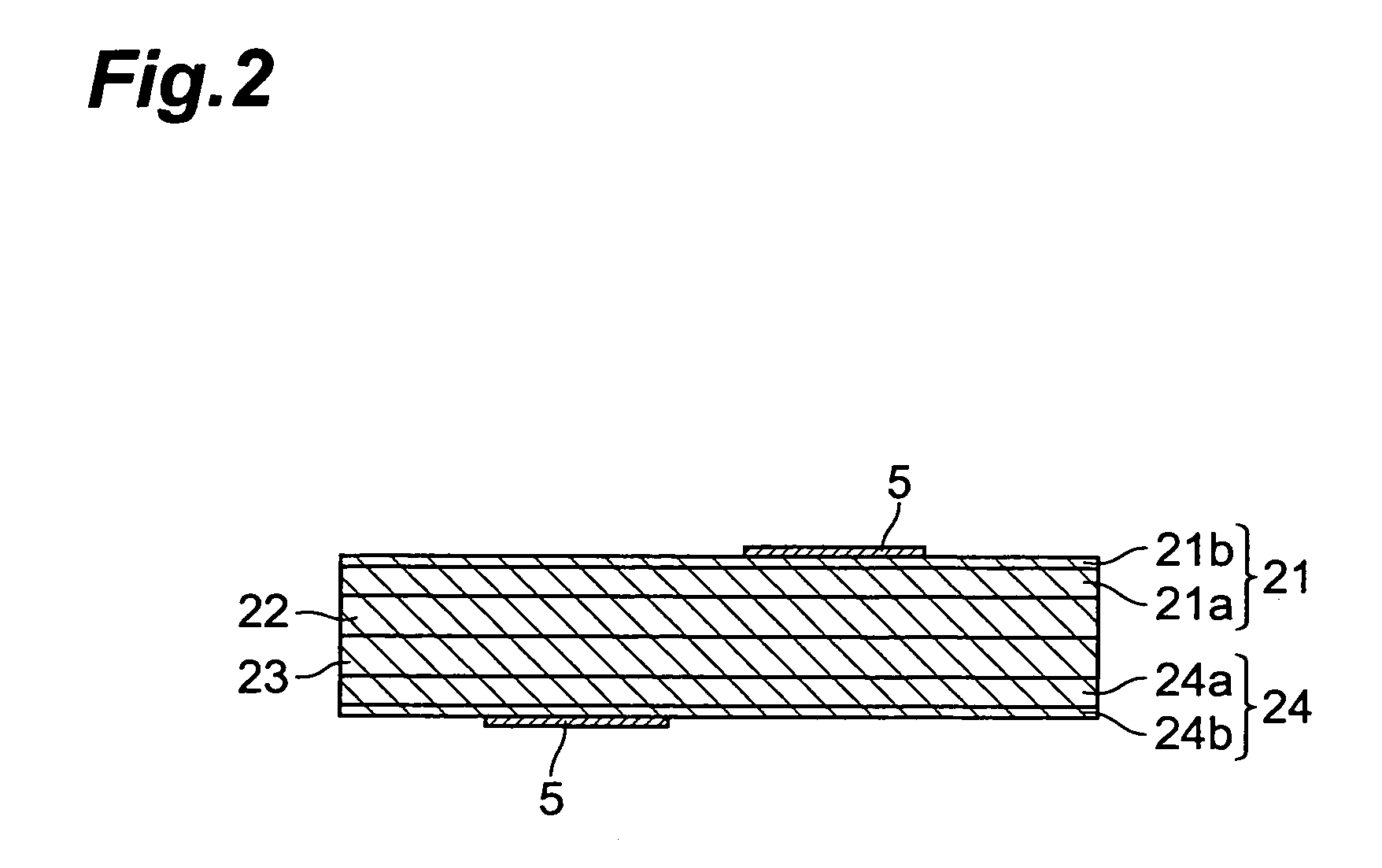Multilayer ceramics substrate
- Summary
- Abstract
- Description
- Claims
- Application Information
AI Technical Summary
Benefits of technology
Problems solved by technology
Method used
Image
Examples
example 1
[0044]A specific example employing the present invention will now be explained with reference to results of an experiment.
[0045]Forming of Reaction Phase
[0046]A multilayer ceramics substrate was made in conformity to the above-mentioned embodiment In the making, surface conductor patterns for forming surface conductors were constructed by a conductor paste containing ZnO. On the other hand, glass ceramics sheets containing alumina (Al2O3) as a filler were used for forming the ceramics substrate layers.
[0047]While varying the alumina filler content in the glass ceramics sheets among 20 vol %, 30 vol %, and 40 vol %, the interfaces between the surface conductors and ceramics substrate layers after firing were analyzed in terms of x-ray diffraction. For measurement, the surface conductors were peeled off, and the surfaces of ceramics substrate layers after peeling were subjected to x-ray diffraction. FIG. 4 shows the results. It was found that the reaction phase (ZnAl2O4) was formed at...
PUM
| Property | Measurement | Unit |
|---|---|---|
| Fraction | aaaaa | aaaaa |
| Fraction | aaaaa | aaaaa |
| Fraction | aaaaa | aaaaa |
Abstract
Description
Claims
Application Information
 Login to View More
Login to View More - R&D
- Intellectual Property
- Life Sciences
- Materials
- Tech Scout
- Unparalleled Data Quality
- Higher Quality Content
- 60% Fewer Hallucinations
Browse by: Latest US Patents, China's latest patents, Technical Efficacy Thesaurus, Application Domain, Technology Topic, Popular Technical Reports.
© 2025 PatSnap. All rights reserved.Legal|Privacy policy|Modern Slavery Act Transparency Statement|Sitemap|About US| Contact US: help@patsnap.com



